Weightlifting is more than just brute strength; it’s a balance of precision, control, and smart support. At Get Gripped, we believe the right tools unlock true potential. Among these tools, a quality weight lifting belt stands out. Not only does it offer essential protection, but it also sharpens lifting technique and maximises training outcomes. Whether you’re chasing a new personal best or building foundational strength, understanding the value of a belt is critical to progressing safely and effectively.
Table of Contents
- Key Takeaways
- Understanding the Role of a Weight Lifting Belt
- A Guide to the Benefits of Weight Lifting Belts
- When Should a Weight Lifting Belt Be Used?
- Choosing the Right Weight Lifting Belt
- Conclusion
- FAQs
Key Takeaways
- Enhances core stability during heavy lifts
- Supports better posture and spinal alignment
- Reduces the risk of lower back injuries
- Boosts intra-abdominal pressure for safer lifts
- Encourages mindful form under heavy loads
Understanding the Role of a Weight Lifting Belt
- Weight lifting belts are not mere accessories. These are precision-designed tools created to support the spine and improve performance during resistance training. A belt functions as a brace for the torso, encouraging deeper core engagement. Contrary to popular belief, it doesn’t substitute core strength; it reinforces it.
- Wearing a lifting belt correctly increases intra-abdominal pressure, offering a stabilising force for the lower back. This becomes particularly important during compound movements such as squats, deadlifts, and overhead presses, where the spinal column bears substantial load.
- Additionally, a belt provides biofeedback, prompting the user to brace the core and maintain alignment throughout the lift. This improves form, reduces compensatory movements, and minimises the likelihood of strain or injury.
A Guide to the Benefits of Weight Lifting Belts
1. Improved Stability Under Load
- Stability plays a central role in safe and effective lifting. A weight lifting belt reinforces the midsection, promoting a grounded, balanced position. The additional compression acts as a support structure during compound movements, particularly when transferring force from the lower body to the upper body.
- Use of a belt enhances muscle fibre recruitment in the transverse abdominis, leading to more efficient and controlled execution of lifts. This additional stability can improve performance when the belt is used correctly.
2. Postural Control and Alignment
- Spinal alignment under load is essential for long-term success in strength training. A belt aids in maintaining a neutral spine, limiting the risks of hyperextension or rounding, particularly when handling heavier weights.
- The physical presence of the belt encourages upright posture, with the chest elevated and hips aligned. Knees remain properly tracked, ensuring the kinetic chain functions as intended. With consistent use, the body develops better postural habits, even when lifting without additional support.
3. Injury Risk Reduction
- Lower back injuries are among the most common setbacks in resistance training, especially due to fatigue or improper form. A belt cannot guarantee injury prevention, but it can significantly reduce the risk by increasing core awareness and bracing capacity.
- Belts help reduce spinal compression and shear forces during maximal lifts. With more control and support, lifters can safely manage heavier loads, allowing for progressive overload without compromising spinal health.
When Should a Weight Lifting Belt Be Used?
A weight lifting belt proves most beneficial under specific training conditions where spinal support and core stability are critical. These include:
- Heavy compound lifts such as squats, deadlifts, and overhead presses: These exercises place a significant load on the spine and require strong intra-abdominal pressure. A belt provides the necessary support to maintain posture and reduce spinal stress during these movements.
- Max-effort or low-repetition strength sets performed at high intensity: During sets approaching maximal effort, maintaining core stability becomes more challenging. A belt can help stabilise the midsection and ensure better control under heavier loads.
- Exercises that apply direct axial load on the spine: Movements that compress the spine vertically, movements as barbell lunges or standing overhead lifts, gain from the additional support of a belt, which helps minimise strain and improve overall lifting technique.
For lighter resistance work, isolation exercises, or general fitness routines, wearing a belt is typically unnecessary. Frequent use of a belt during less demanding movements can limit core engagement and negatively impact the improvement of natural body coordination. For optimal results, belt use should align with specific lifting goals and be integrated thoughtfully into training plans.
Choosing the Right Weight Lifting Belt
The right belt depends on factors such as training discipline, anatomy, and lifting style. Belts designed for powerlifting are typically broader and more rigid, providing enhanced stability for heavy, static strength exercises. In contrast, Olympic-style belts are typically more flexible, suiting movements requiring greater mobility.
Key Features to Consider:
- Adjustable closure systems, such as buckles or lever locks: A reliable and secure closure mechanism is essential for maintaining consistent tension throughout a lift. Lever locks and buckles offer accurate adjustability, helping the belt remain secure and stable throughout high-intensity lifts without shifting or loosening.
- High-grade materials, including leather or reinforced nylon: The durability and performance of a belt largely depend on the material used. Genuine leather offers excellent rigidity and long-term resilience, while reinforced nylon provides flexibility and comfort, making it suitable for a range of lifting styles and preferences.
- Uniform width, to provide consistent support across the entire core: Belts with a consistent width from front to back deliver balanced pressure around the midsection, promoting even stability. This helps reduce the risk of uneven force distribution, which could compromise spinal alignment during heavy lifts.
An effective lifting belt must achieve an optimal blend of support, long-lasting durability, and overall comfort. Investing in quality craftsmanship ensures the belt withstands regular use in demanding training environments while delivering the structural reinforcement needed to lift safely and effectively.
Conclusion
A weight lifting belt is more than a piece of gear; it’s a signal to the body that precision matters. Stability, spinal safety, and consistent technique are all amplified with the right belt in play. At Get Gripped, every belt is crafted to support lifters with purpose, not gimmicks. Interested in levelling up your training gear? Reach out to us today or visit the belt collection to find a fit that works as hard as you do.
FAQs
- What is the purpose of a weight lifting belt?
A weight lifting belt enhances intra-abdominal pressure, providing crucial support to the spine during heavy lifts and promoting improved core stability.
- Does using a lifting belt indicate poor form or dependency?
No. When used appropriately, a belt promotes safer lifting by encouraging proper form and reducing the likelihood of injury. It works alongside natural bracing techniques.
- Is a weight lifting belt suitable for beginners?
Beginners are generally encouraged to develop core strength and refine technique before incorporating a belt. It becomes useful once heavier loads are introduced.
- How tight should a weight lifting belt be worn?
The belt should be secure enough to generate proper tension for bracing, yet not so tight that it limits breathing or restricts movement.
- Should a lifting belt be worn during all exercises?
A belt is most effective during heavy, compound movements that place the spine under load. Regular use during all exercises may hinder the development of natural core strength.
- What type of weight lifting belt provides the best support?
The most effective belt depends on the type of training. A firm, uniform-width belt suits heavy lifting, while a contoured or flexible design may better accommodate Olympic-style movements.

